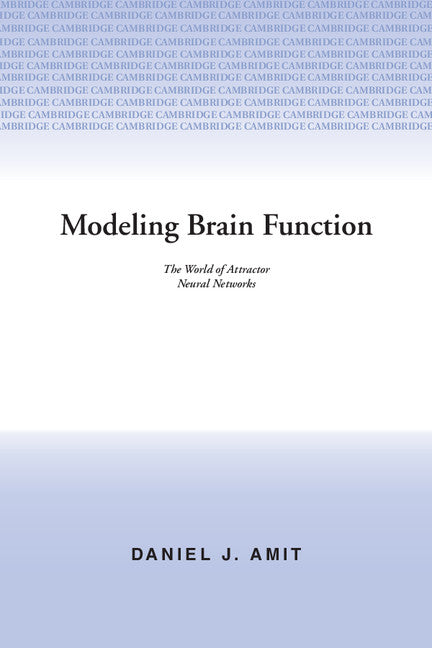Freshly Printed - allow 8 days lead
Couldn't load pickup availability
Modeling Brain Function
The World of Attractor Neural Networks
Daniel J. Amit (Author)
9780521421249, Cambridge University Press
Paperback, published 26 June 1992
524 pages, 107 b/w illus. 1 table
22.9 x 15.2 x 2.8 cm, 0.71 kg
"...regard this book as an opening of a discussion--undoubtedly a very qualified one." Journal of Mathematical Psychology
One of the most exciting and potentially rewarding areas of scientific research is the study of the principles and mechanisms underlying brain function. It is also of great promise to future generations of computers. A growing group of researchers, adapting knowledge and techniques from a wide range of scientific disciplines, have made substantial progress understanding memory, the learning process, and self organization by studying the properties of models of neural networks - idealized systems containing very large numbers of connected neurons, whose interactions give rise to the special qualities of the brain. This book introduces and explains the techniques brought from physics to the study of neural networks and the insights they have stimulated. It is written at a level accessible to the wide range of researchers working on these problems - statistical physicists, biologists, computer scientists, computer technologists and cognitive psychologists. The author presents a coherent and clear nonmechanical presentation of all the basic ideas and results. More technical aspects are restricted, wherever possible, to special sections and appendices in each chapter. The book is suitable as a text for graduate courses in physics, electrical engineering, computer science and biology.
Preface
1. Introduction
2. The basic attractor neural network
3. General ideas concerning dynamics
4. Symmetric neural networks at low memory loading
5. Storage and retrieval of temporal sequences
6. Storage capacity of ANNs
7. Robustness - getting closer to biology
8. Memory data structures
9. Learning
10. Hareware implementations of neural networks
Glossary
Index.
Subject Areas: Neurosciences [PSAN]


